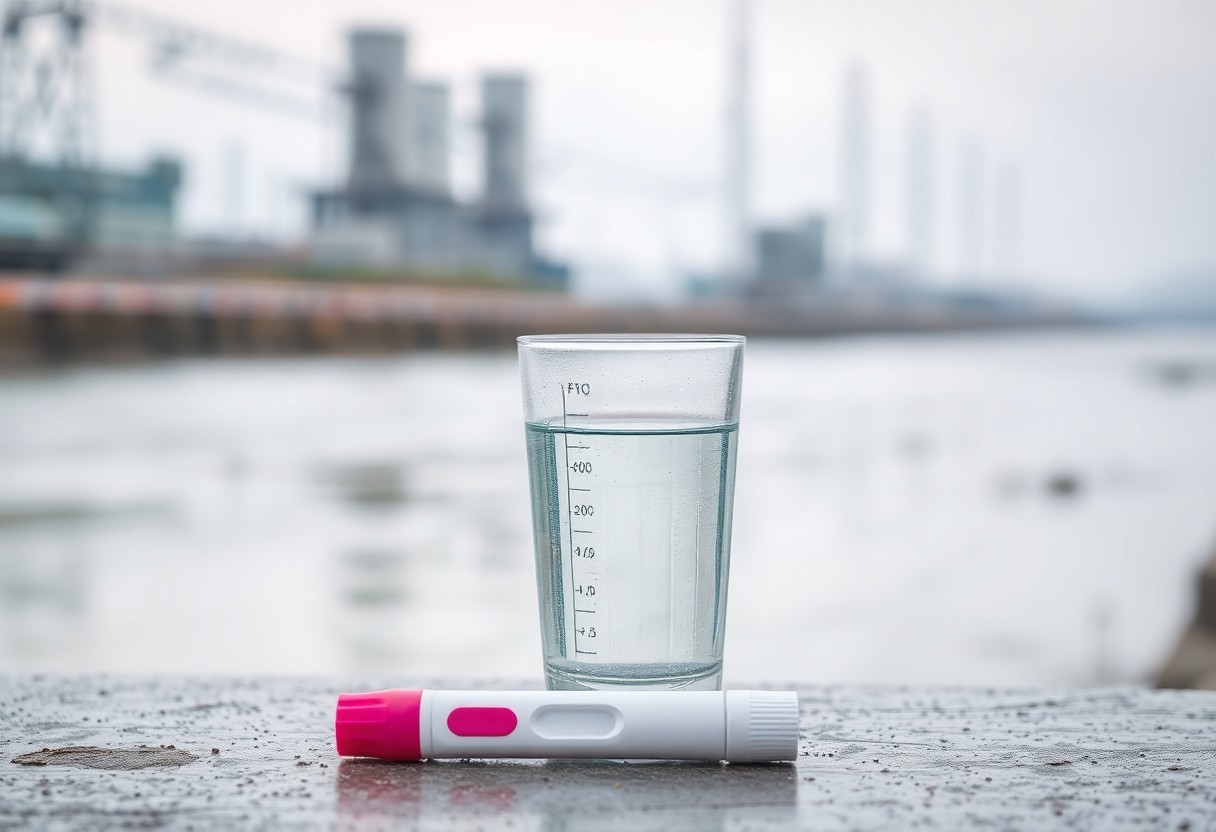Many individuals are becoming increasingly aware of PFAS contamination, a hazardous issue affecting drinking water, soil, and even food supplies. These persistent man-made chemicals, often found in everyday items, can have serious health implications for you and your loved ones, including increased risks of certain cancers and immune system disruptions. As awareness of this contamination rises, it is vital for you to understand how PFAS may influence your health and the environment, and what steps you can take to mitigate its impact on your life.
Understanding PFAS
Your awareness of PFAS (Per- and polyfluoroalkyl substances) is imperative as these man-made chemicals have become increasingly prevalent in modern society. They are widely known for their water- and grease-resistant properties, making them valuable in various industrial and consumer products. However, their durability also means they persist in the environment and bioaccumulate in living organisms, raising significant health concerns.
Definition of PFAS
After many years of use, PFAS have been identified as a group of synthetic chemicals that includes thousands of variants. These substances are characterized by their strong carbon-fluorine bonds, which make them resistant to degradation. Their unique chemical properties have made them popular in a range of applications, from nonstick cookware to firefighting foam.
Sources of PFAS Contamination
The sources of PFAS contamination are diverse and often surprising. These chemicals can be found in household items like stain-resistant fabrics, waterproof clothing, and food packaging materials. Additionally, industrial uses, such as in firefighting foam and certain manufacturing processes, contribute significantly to environmental pollution.
PFAS are often released into the environment from production facilities, landfills, and even wastewater treatment plants. Consumer products containing PFAS may leach these substances into the soil and water supply, leading to widespread contamination. The use of firefighting foam in emergency situations is another major source, as it often contaminates soil and groundwater. Understanding these sources can help you take proactive measures to protect yourself and your community from the harmful effects of PFAS.
Health Risks Associated with PFAS
There’s a growing body of evidence linking PFAS exposure to various health risks, including liver damage, increased cholesterol levels, and disruptions to hormonal balance. As these chemicals persist in your body, they may lead to serious health conditions, such as immune system suppression and potential tumors. Understanding these risks can help you make informed decisions about your exposure to PFAS in everyday products.
Effects on Human Health
Between studies, researchers have found that PFAS can lead to significant health issues, particularly affecting your liver and immune system. Exposure is often linked to reproductive and developmental problems, making it important for you to assess your potential contact with these harmful chemicals and take action to reduce it.
Environmental Impact
Among the various concerns regarding PFAS, the environmental impact cannot be overlooked. These chemicals contaminate water supplies and soil, making their way into the food chain. For you, this means that PFAS can accumulate in fish and other wildlife, potentially posing risks to both ecosystem health and human consumption.
Associated with extensive environmental contamination, PFAS have been found in drinking water sources, affecting millions of people globally. These chemicals resist degradation, leading to long-lasting pollutants that can impact aquatic life and biodiversity. Furthermore, the pervasive nature of PFAS means that remediation efforts can be costly and complex, ultimately impacting community health and local economies. By understanding these environmental effects, you can advocate for better policies and practices to protect both yourself and the planet.
Regulation and Policy
Assuming you are concerned about PFAS contamination, it is vital to understand the current regulatory landscape that surrounds these substances. While some states have implemented stricter guidelines, there is still a lack of comprehensive federal regulations specifically targeting PFAS. The fragmented nature of legislation across various states often leaves gaps in protection, making it vital for you to stay informed and advocate for stronger policies in your local area.
Current Regulations
For many years, PFAS have remained largely unregulated at the federal level, with existing guidelines primarily focusing on specific applications or uses. The Environmental Protection Agency (EPA) has issued health advisory levels for certain PFAS, but these are non-enforceable and lack mandatory compliance. As you navigate this issue, be aware that regulations can vary significantly by state, impacting how these toxic substances are managed in your community.
Proposed Legislative Changes
Before you can fully grasp the potential impact of PFAS on public health and the environment, you should be aware of upcoming legislative changes aimed at addressing contamination. Recent proposals aim to establish enforceable federal standards for PFAS, increasing accountability among manufacturers and reducing exposure risks. This becomes particularly important as more health studies highlight the pervasive risks associated with these chemicals.
Proposed legislative changes are making significant strides towards regulating PFAS contaminants. The legislation aims to establish strict federal limits on permissible PFAS levels in drinking water, thereby protecting your health and that of your community. It also includes provisions for mandatory testing and reporting of PFAS levels by industries, which would lead to greater transparency. Furthermore, the proposals call for increased funding to assist contaminated communities, enabling comprehensive cleanup efforts. These changes reflect a growing recognition of the dangers posed by PFAS, fostering a safer future for you and the environment.
Detection and Testing
Many experts agree that identifying PFAS contamination is crucial for protecting your health and the environment. Various methods have been developed to detect these harmful substances in various media, such as soil, water, and even food. Accurate detection enables informed decisions on environment and public health, ensuring that you remain protected from potential exposure.
Methods of Detection
Across the scientific community, several advanced methods are employed to detect PFAS, including liquid chromatography and mass spectrometry. These cutting-edge techniques allow for sensitive and precise identification of specific PFAS compounds, enabling researchers and regulatory authorities to assess contamination levels effectively.
Importance of Testing
One of the key reasons for routine testing of PFAS is to safeguard your health and well-being. With the increasing prevalence of these chemicals in our environment, testing should become a part of your regular health assessment, especially if you live in areas known for contamination.
Understanding the importance of testing for PFAS can significantly impact your safety. Detection allows you to be aware of potential risks regarding water and food contamination, leading you to make informed decisions about your consumption and lifestyle. By identifying hazardous levels of PFAS, you can take necessary precautions, such as using filtered water or avoiding certain products, which will ultimately help to mitigate adverse health effects associated with long-term exposure.
Mitigation Strategies
Keep in mind that effective mitigation strategies are vital in addressing PFAS contamination. Implementing comprehensive measures such as the use of filtration systems, proper site cleanup, and public education can significantly reduce the impact of these hazardous substances on your environment and health.
Cleaning Contaminated Sites
Any effective approach to tackle PFAS contamination must focus on cleaning contaminated sites. This involves soil excavation, advanced treatment technologies, or even encapsulation to prevent further exposure. Collaboration with environmental specialists can yield the best results in restoring affected areas and ensuring community safety.
Reducing Personal Exposure
Between the numerous sources of PFAS, reducing your personal exposure can play a significant role in protecting your health. You can limit contact by avoiding products known to contain PFAS, using water filters specifically designed to remove these chemicals, and being cautious with food packaging and cookware.
Hence, when you take steps to reduce your personal exposure, it can greatly lessen the risks associated with PFAS. Choose PFAS-free household products, opt for fresh or frozen foods, and limit consumption of fast food, which often comes in PFAS-treated packaging. Additionally, utilizing high-quality water filters can further screen your drinking water, ensuring it is free from these harmful chemicals. Taking these proactive measures empowers you to safeguard your health and contribute to a cleaner environment.

Community Action and Awareness
To combat the challenges posed by PFAS contamination, community action and awareness play a significant role in driving change. Engaging with local organizations, participating in initiatives, and advocating for policy changes can empower you and your neighbors to take a stand against this pervasive issue. Your involvement not only raises awareness but also builds a stronger community response that can lead to meaningful solutions.
Grassroots Movements
Across the country, grassroots movements are emerging as effective means for communities to address PFAS contamination. These grassroots efforts unite individuals who share a common goal of raising awareness, fostering environmental justice, and demanding regulatory changes. By joining such movements, you can amplify your voice and contribute to pushing for safer environments and accountability from industries responsible for PFAS pollution.
Public Education and Resources
On the frontlines of the fight against PFAS contamination, public education and resources are imperative tools for empowering communities. Access to accurate information helps you understand the risks associated with PFAS, promotes informed decision-making, and encourages community dialogues. By disseminating resources, local organizations can equip you with the knowledge needed to advocate for your health and the health of your environment.
This emphasis on education is vital, as it encourages individuals to seek out information about PFAS, including its sources, health impacts, and effective mitigation strategies. Workshops, community meetings, and informational campaigns enhance your understanding of the issue, while also connecting you with others who share your concern. By leveraging available resources, you can engage actively in discussions that promote transparency and drive necessary policy changes to mitigate the threat of PFAS contamination in your community.
Conclusion
With these considerations, you should recognize the urgency surrounding PFAS contamination and its potential effects on your health and the environment. It’s important to stay informed about this issue, advocate for stricter regulations, and actively search for ways to minimize your exposure. By understanding the risks and taking steps to safeguard your well-being, you can contribute to a broader movement aimed at addressing this pervasive challenge and protecting future generations from the dangers of PFAS.





















